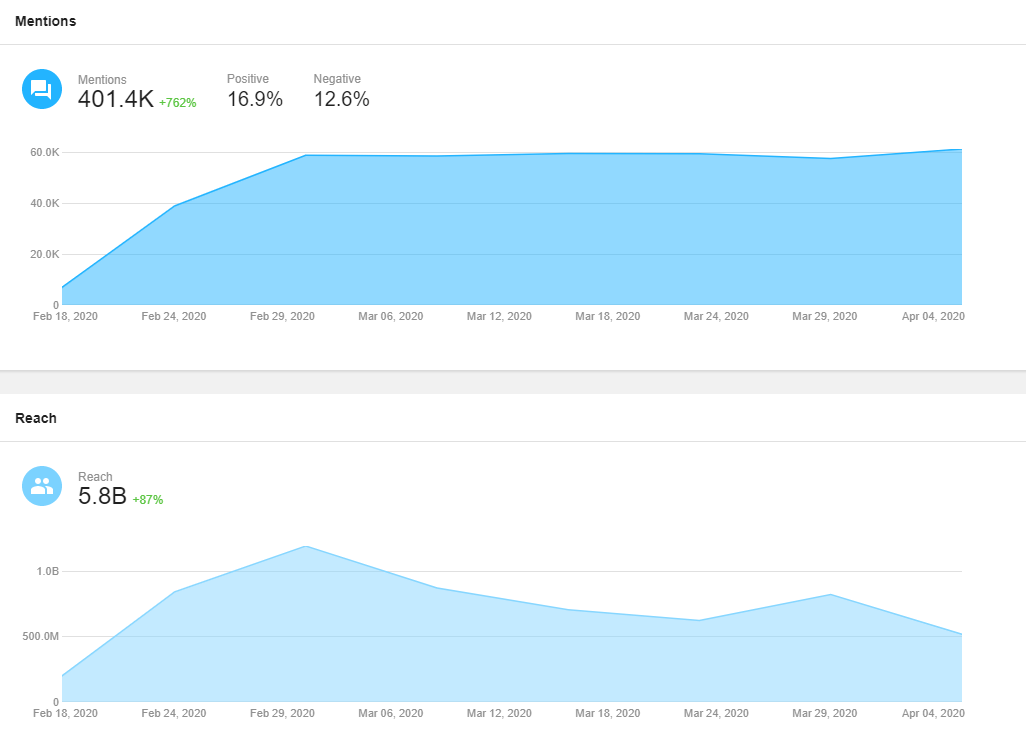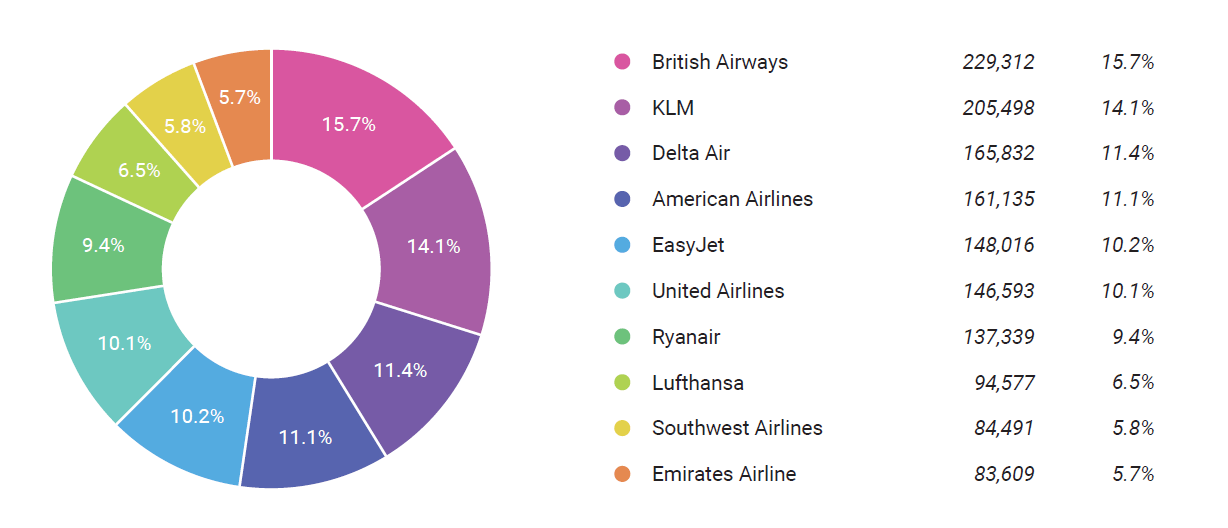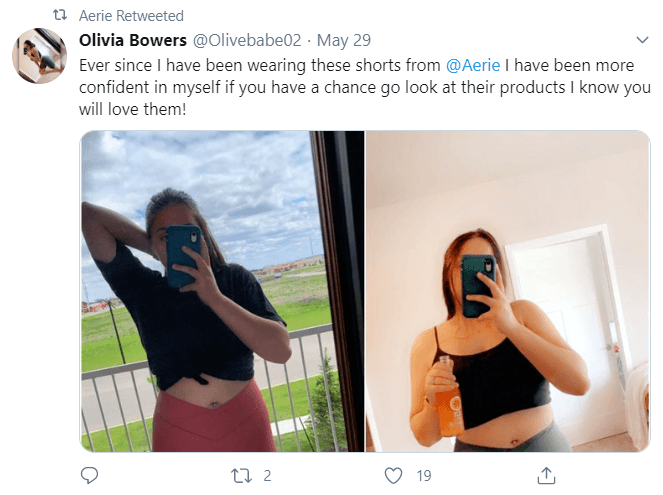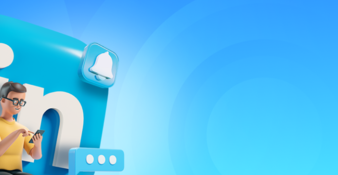A guide to Brand Awareness: how to measure & increase it

Brand awareness is a term that’s hard to ignore for newcomer marketers and entrepreneurs. It seems to be everywhere, yet, it’s not that easy to understand and even harder to measure.
In this article, we’ll break down the metrics behind brand awareness, and look at how to measure and improve them.
What is brand awareness?
Brand awareness defines the extent to which consumers are familiar with the qualities or image of a particular brand of goods or services. High brand awareness is a goal for every company. It’s obviously helpful when people recognize your brand’s logo, recall your brand when they think about your industry, and use its name in everyday conversations.
Brand awareness is the result of good marketing and PR. Establishing, measuring, and increasing brand awareness is an ongoing process - and it’s far from an easy one.
The most challenging aspect of brand awareness is that it’s a rather vague concept. For anyone who advocates for hard numbers and heartless maths, brand awareness will look like something that’s easier to neglect. Yet, just because something is hard to measure, doesn’t mean that it’s not worth pursuing. Quite the opposite, and this is why:
-
Brand awareness fosters trust - it’s rare that anyone buys a product from an unknown company.
-
Brand awareness creates communities of loyal customers determined to advocate for the brand: think Apple, Tesla, Urban Decay, Dr Martens, Oatly… Whatever your product or service is, you can build such a community and benefit hugely from it.
-
Brand awareness creates brand equity: people pay more due to higher perceived value, what the brand stands for, or what the brand symbolizes.
Brand awareness is valuable and worth measuring. And the easiest way to measure it is through social listening.
What is social listening? How can it help measure brand awareness?
Social listening is the monitoring of social media, news sites, blogs, forums, and web pages for mentions of your brand. In fact, it doesn’t have to be your brand - you can monitor the Internet for mentions of your own name, your product, your CEO, or your ex-lover. However, when it comes to brand awareness, it makes more sense to monitor your brand.
Social listening is not a manual task. There are plenty of great social media monitoring tools, such as Awario, that do the monitoring for you.
A social media monitoring/listening tool collects all online mentions of your brand, and creates a graph that shows you how much people are talking about you and how this has changed over time. This is a top graph on the screenshot below.

You discover how much people talk about you, how much they recommend your brand in their blog posts and reviews and mention you in social conversations and forums. This is not a direct representation of how much people know your brand, but it’s pretty close. Especially, if you consider that the more people talk about your brand, the more the overall brand awareness increases.
Speaking of which, there is another metric that represents how much people hear about your brand from others. This number is usually much bigger, as you bump into the same brand multiple times a day. Just recall how many times you saw mentions of SpaceX during the launch of Crew Dragon. The metric is called Reach (in Awario), and you can see it represented as the bottom graph in the screenshot above.
It doesn’t hurt to observe how Reach changes over time in order to assess the result of your marketing campaigns or any other events on your level of brand awareness.
Is any brand awareness good?
People often say that there is no such thing as bad publicity. However, you might disagree with this (I do). In this case, check the sentiment behind the talk about your brand. In Awario, there is a Sentiment Analysis feature. The tool breaks down mentions of your brand into positive, negative, and neutral, and shows you - you guessed it - the graph.

How to adequately assess brand awareness?
So you own a beauty parlor in San Francisco. You got a social listening tool, created an alert for your brand name, and discovered that X number of people talk about you. How do you know if this is a good result? Surely, if the number is bigger than last month (or the same month last year to account for seasonality), you're making a progress. However, there is also another way: you can benchmark your results against your competition.
To do that, create alerts for your main competitors, and jump to the Share of Voice metric. It will show you how much people talk about you compared to your main competitors, which will give you a much clearer idea of where your brand is at.

By signing up I agree to the Terms of Use and Privacy Policy
How to increase brand awareness?
As you probably realize, there is no “ideal” number that shows perfect brand awareness. You can always do more, you can always do better. There are a number of ways you can increase the level of conversation around your brand.
1. Influencer marketing
Influencer marketing is one of the most effective tactics for growing brand awareness. Although we’ll talk more about social media influencers, it’s all kinds of influencers that are helpful for “spreading the word”. The very definition of an influencer implies that they have a rather large audience whose opinions they influence. A brand promoted (mentioned, reviewed) by such a person is discovered by many people at once.
With influencer marketing, there are two main challenges: pricing and relevance. Firstly, most offline influencers are simply impossible to afford for small and medium-sized businesses. Secondly, they are only relevant to some industries. You can see how movie stars would be effective in advertising makeup, and how sportspeople would be great for advertising sports clothing. But beyond that?

That’s when social media enters. On social media, you can find micro- and macro-influencers in every niche. Whatever the topic is, there are people that cover it and have a substantial dedicated following. You can find them using Awario or influencer marketing tools, and collaborate with them in any mutually profitable way.
2. Social media marketing
Social media marketing is a broad concept and, above all, implies how the brand behaves on social media. Most brands treat their social channels as just another promotion channel. While this also works, with social media, you can do so much more to grow brand awareness.
You can develop a brand personality and act as a friend: get into conversations around your niche, comment on posts relevant to your expertise, make jokes, get to know other important people in the niche.

You can build a friendly community using community platforms to interact with your audience, sharing their content, posting relatable things unrelated to your product.

Social media marketing is first and foremost about socializing. And if you’re good at it, the word about your brand will spread organically without much pushing from your side.
3. User-generated content
User-generated content is one of the trendy things on social media and beyond it. Simply put, UGC is any content — text, videos, images, reviews, etc. — created by people, rather than brands. Essentially, this is your customers promoting the brand for you. Isn’t it a dream?

Brands work hard to encourage UGC: they carry out contests, organize online flash mobs, use hashtags, and promise to feature UGC on their main page for mutual promotion.
4. PR
You don’t need me to explain to you the meaning and importance of PR.
However, you might need me to tell you that you can find bloggers and journalists and relevant news sites with social monitoring. Creating an alert for your brand and limiting your sources to news and blogs will return all journalists and articles that have mentioned your brand.

And if you create alerts for your competitors, the tool will show you articles that have mentioned those. Their authors will surely be a good goal for reaching out!
5. Free content
Free educational and/or entertaining content is another effective way to spread awareness about your brand. Case in point!
If writing isn’t your thing, there are multiple ways to do it: you can create videos, infographics, podcasts… Content creation also doesn’t require a personal blog or website: you can guest post and do sponsored content. The idea remains the same: spread the word about your brand, and good things will happen to you.
Do you know other effective ways to measure and increase brand awareness? Have you successfully used any of those? Please share in the comment section!













